Time has always been a crucial aspect of life, managed and tracked in various capacities over centuries. The charm of seeing time pass has made clocks an essential household item with countless types adorning our homes. They not only allow us to keep a tab on time but offer an aesthetic value that enhances the overall ambiance of our interiors. Today, the market is rife with a myriad of wall clocks, each with its unique set of features, styles, and designs, setting them apart from one another. Whether you are a fan of the classic pendulum swing or a lover of the modern digital display, understanding the different types of wall clocks can help you make informed buying decisions.
Understanding Various Types of Wall Clocks
Traditional Wall Clocks
Traditional wall clocks are characterized by their timeless design elements that never go out of style. Featuring an analog time display, these clocks often have a circular or square face with numerical or roman numeral markers. Some traditional clocks have a pendulum mechanism, which gives a rhythmic oscillation. The hands of traditional wall clocks are driven by gears and springs, making them remarkably accurate. They can come in various styles and materials such as wood, iron, plastic, and many more catering to a wide range of aesthetic preferences. As they provide a more antique feel to a home, many homeowners prefer this type to modernize their homes yet keep a classic touch.
Antique Wall Clocks
Antique wall clocks are valued for their detailed craftsmanship, unique designs, and the historic value they bring to a home. Some of these clocks can be over 100 years old, acting as a glimpse into a bygone era. Antique clocks take on various forms, from the heavily ornamented Gilded Age clocks to the simpler Bauhaus designs. These clocks may contain a variety of mechanisms including mechanical windup systems or the early quartz movements. Due to their age and intricacy, these types of wall clocks might need more maintenance than newer models. However, their vintage charm is often considered worth the effort.
Digital Wall Clocks
Digital wall clocks offer a modern, sleek look and are known for their easy readability. They display the time in numerical digits rather than using hands, like their traditional and antique counterparts. Many digital clocks come with additional features such as temperature readings, calendar displays, and alarms. Some digital clocks may also have light-emitting diode (LED) or liquid crystal display (LCD) screens, which illuminate the time for easy viewing in the dark. These clocks can vary in design and size, from minimalist to futuristically high-tech, suiting a diversity of interior designs.
Cuckoo Clocks
Originating from Germany’s Black Forest region, cuckoo clocks are famed for their whimsical charm. They are characterized by a bird that pops out with a ‘cuckoo’ sound on the hour, a feature that has delighted generations of children and adults alike. These clocks are typically made from wood and often feature intricate carvings, making them both a timepiece and a piece of art. While traditionally cuckoo clocks were driven by weights and pendulums, modern versions may also include quartz movements for increased accuracy.
Diverse Wall Clock Styles
Wall clocks come in a myriad of styles catering to various preferences and requirements. For instance, those with vision impairments may favor clocks with large, easily visible numbers and hands. Children’s wall clocks frequently incorporate engaging designs and vibrant colors, alongside instructive elements like shapes or numbers. You’ll also find atomic wall clocks that rely on radio signals from a central transmitter to maintain precise time. Not to mention, there are musical wall clocks that mark each hour with a chime, lending a delightful, dynamic dimension to timekeeping.
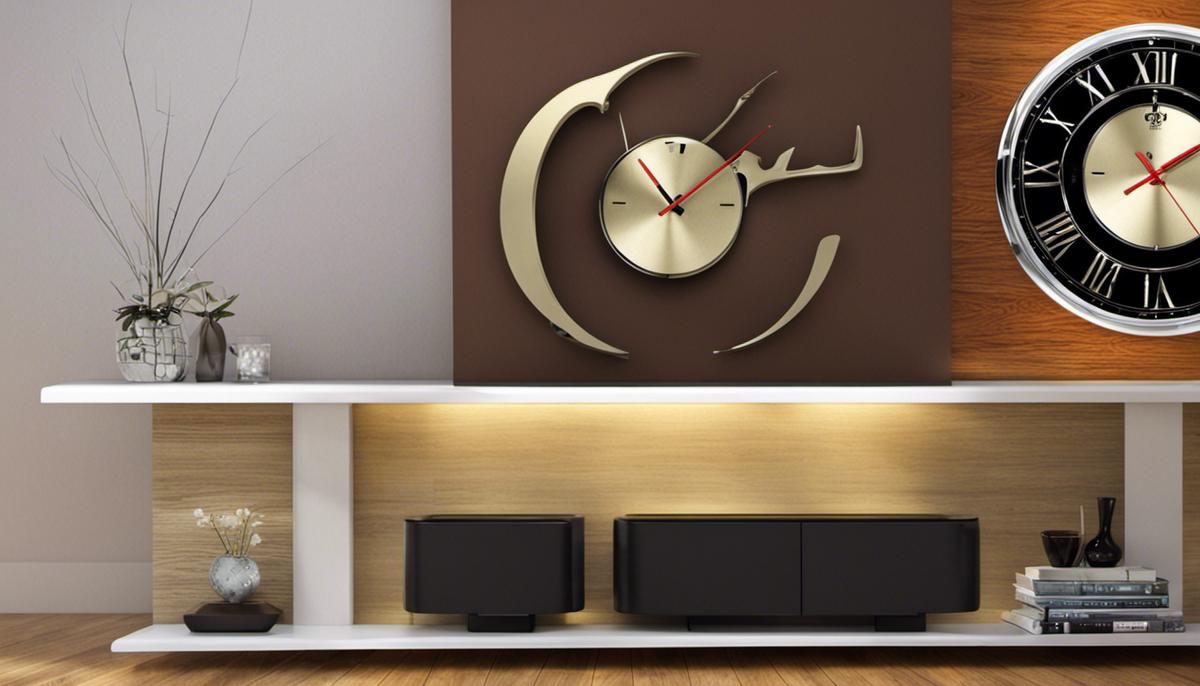
Factors to Consider When Buying a Wall Clock
Considerations for Wall Clock Size
The size of your wall clock significantly impacts the aesthetic appeal of your home. A small clock may get lost on a large wall, while a sizeable clock could infringe upon the space in a smaller room, creating a cluttered look. It’s crucial to consider the wall space available and select a clock that complements, not overwhelms, the space.
Clock Design
The design of the wall clock is another important element. A clock can be a focal point in your home, like a piece of artwork. If your home decor is modern, you might want to choose a clock with a sleek, simple design. If you have a more traditional home, then a classic pendulum wall clock might be a good choice. The clock design can also reflect your personal style.
Material of the Clock
The materials used in wall clocks vary greatly; they can be made from metal, wood, plastic, or even glass. Depending on the atmosphere you want to create in your home, the material of the clock is a crucial factor. A wooden wall clock gives off a warm and traditional vibe, while a metal clock can look modern and clean.
Price and Brand
When it comes to pricing and brand, it depends on your budget and trust in certain brands. For a quality, long-lasting clock, it may be worth paying a bit more. Shopping around and comparing prices and brands can help you find a balance between price and quality that suits your needs.
Function in the Home
The function of the wall clock in your home is another important consideration. Some people use wall clocks simply to tell the time, while others use them as a decorative element. There are also clocks with extra features, such as alarms or timers, which can be particularly handy in the kitchen. Consider where you want to place your clock and what purpose it serves.
Wrapping Up
Timekeeping is just a fraction of what’s important when selecting a wall clock for your living space. The design, size, material, cost, and brand are all significant factors in choosing an ideal clock that not only compliments your home but also represent your personal style. This breakdown is intended to guide you towards making an educated decision when buying a wall clock for your home.
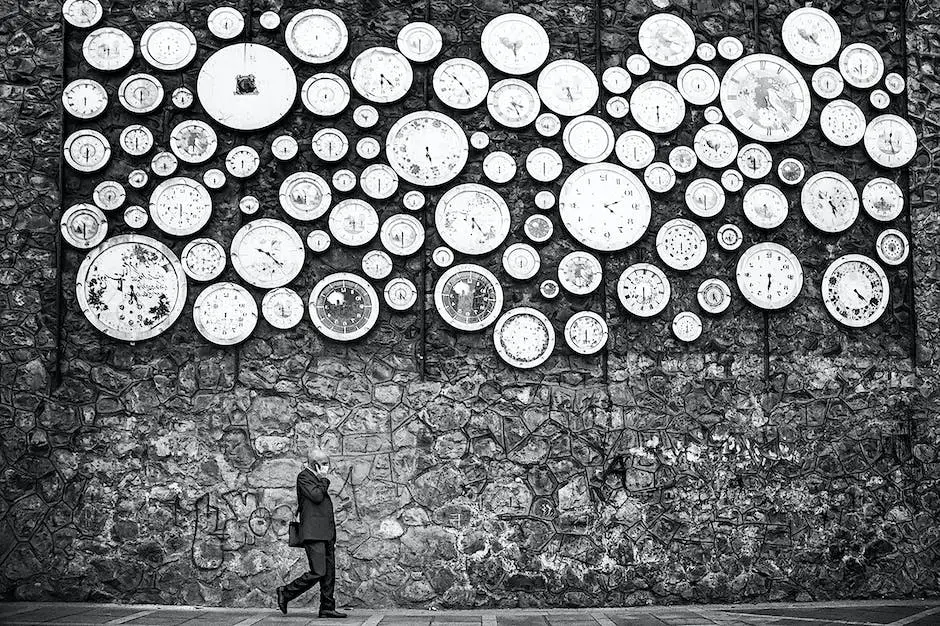
How to Match Wall Clock with Home Decor
Harmonizing Wall Clocks with Home Aesthetics
A wall clock is more than a practical necessity – it holds potential to be a pivotal piece of your home aesthetics. It’s vital to ponder over your home’s style, color scheme, and overall visual appeal before making an investment in a wall clock. Your chosen wall clock should augment your home’s aesthetic appeal and not diminish it. For instance, if your home’s decor leans towards the traditional side, an antique or vintage-style clock might be most appropriate. If your home carries a modern or minimalist vibe, you may opt for a clock that offers a sleek, streamlined look.
The colour of your clock should harmoniously blend with your room’s color scheme. You might prefer a warmer colored clock, like gold or amber, if your room sports a warm hue. On the contrary, if your color scheme is cooler, a clock in silver, gray, or even black and white might be a more suitable option.
Wall Clocks and Room Functionality
Consider the functionality of the room where you’ll be placing the wall clock. For instance, in a living room, where you entertain guests, you might want a large statement clock that draws the eye. In a bedroom, a more muted, quiet, or light-equipped clock may be best to ensure a soothing sleep environment.
In the kitchen, you might consider a clock with a built-in timer function for cooking, and something that’s easy to clean. For home offices or study rooms, clocks with minute markings are ideal to keep track of time down to the last detail.
Positioning a Wall Clock
The placement of a wall clock can significantly enhance your room’s overall aesthetic. The traditional location for a wall clock is above a door or window, centrally positioned so it can be seen from anywhere in the room.
However, you’re not limited to this. You can hang your clock above the mantelpiece, place it on a shelf amid other decorative pieces, or hang it in a cluster of other wall decor. In large, open rooms, oversized clocks can serve as the room’s focal point.
Also, proper height is key. As a rule of thumb, eye-level is usually the most comfortable height for viewers. This might be different for rooms where people are usually sitting (like living rooms) versus those where they’re most often standing (like kitchens).
Remember to avoid placing your clock in a spot where it will be directly exposed to sunlight, which can fade its colors, or near a heat source, which might damage the internal mechanisms.
Overall, the wall clock you choose should not only help everyone stay on time, but also subtly tie together your room’s style and function.
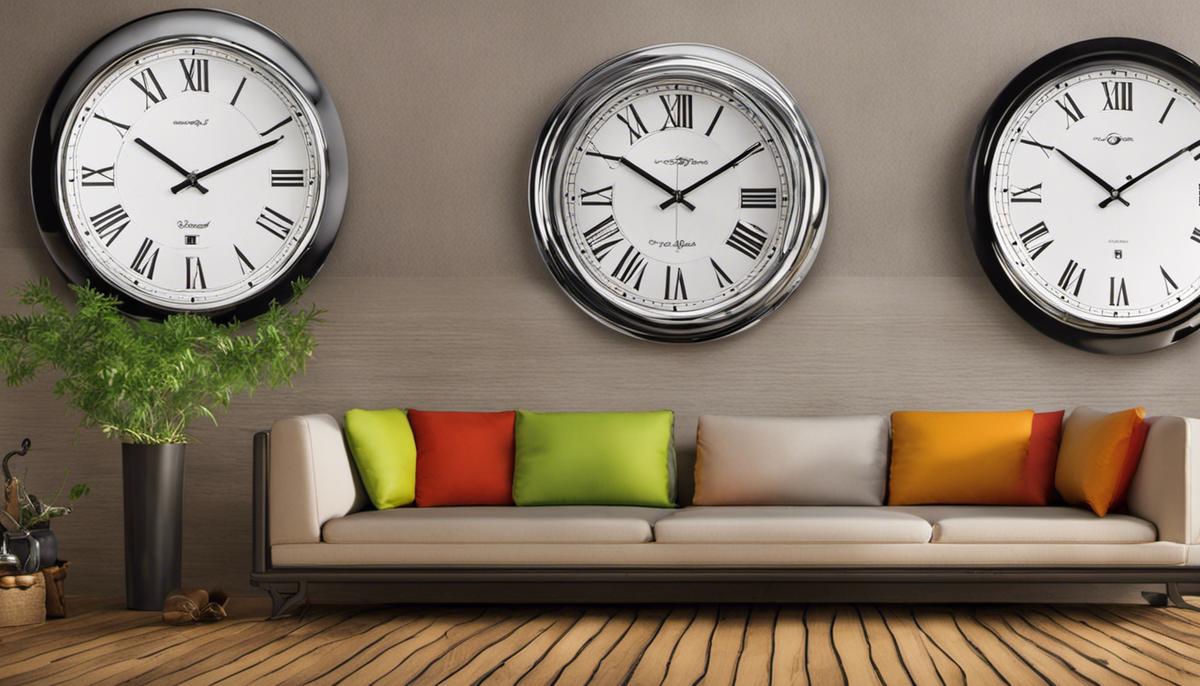
In conclusion, investing in a wall clock goes beyond merely choosing one that tells the time. It involves considering various factors like the design, size, material, price, and even the reputation of the brand. Additionally, the clock needs to harmonize with the existing home décor to enhance the overall aesthetic appeal of your space. Whether you choose to make it a centerpiece of your living room or an understated accessory in a study, the right wall clock can transform a space while seamlessly blending functionality and style. So, take considerable time as you tick towards finding your perfect timepiece. It is, after all, a reflection of your style and a statement about how you value your time.

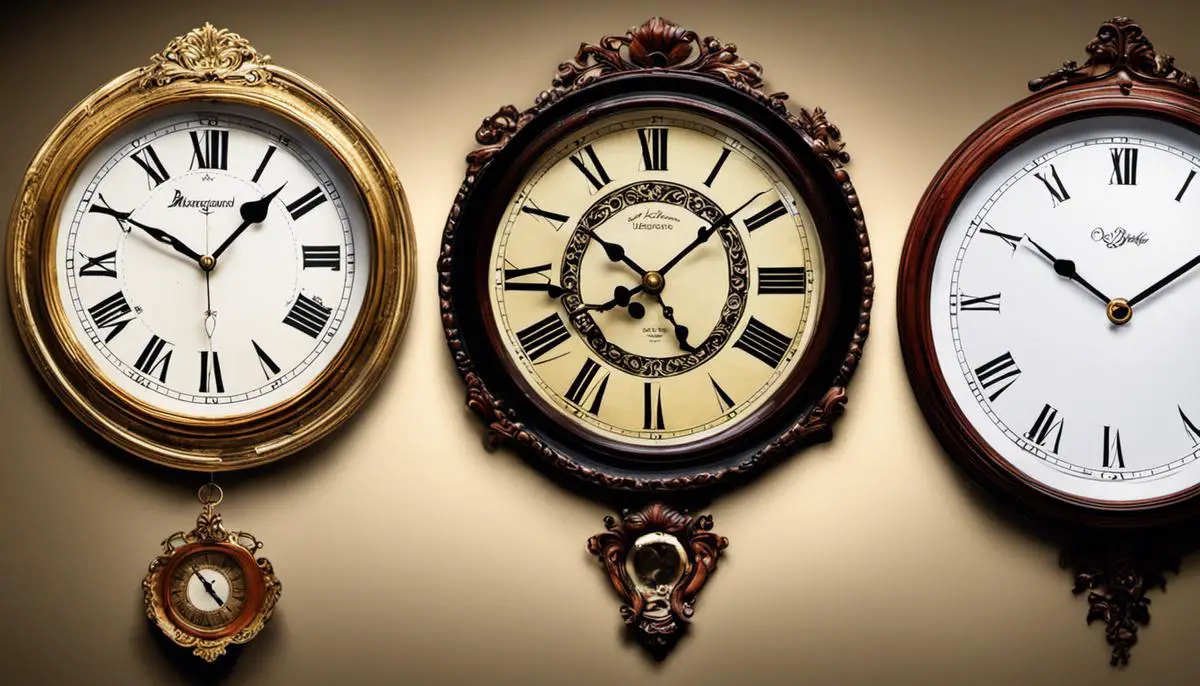
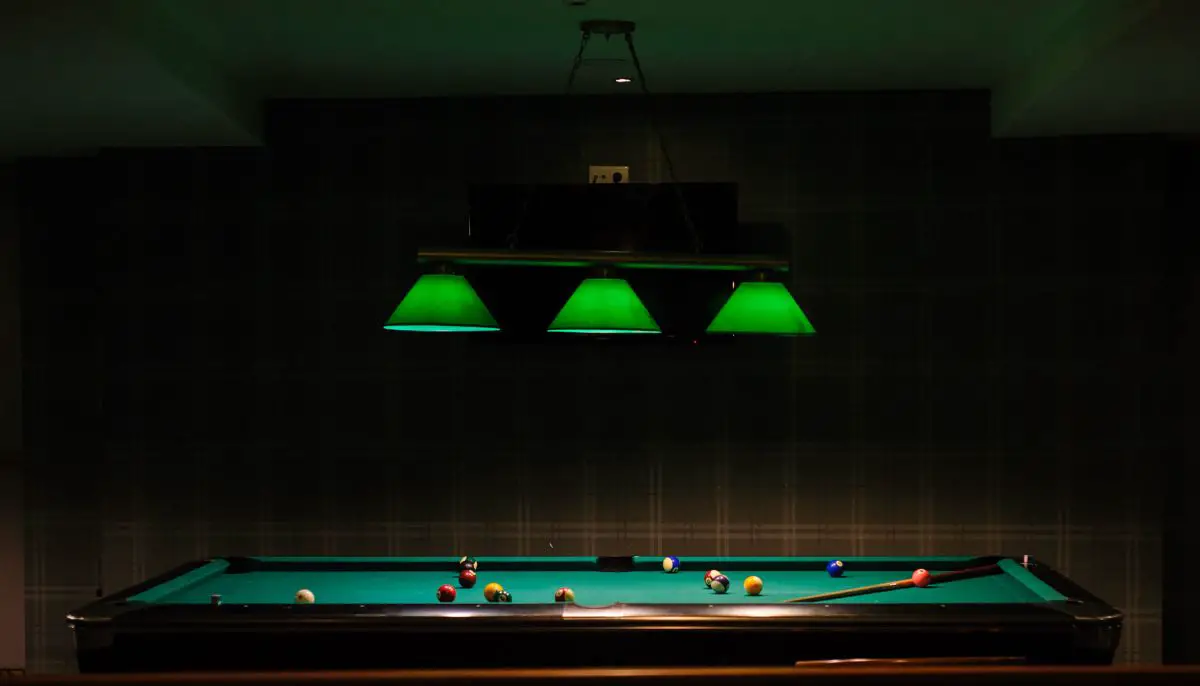

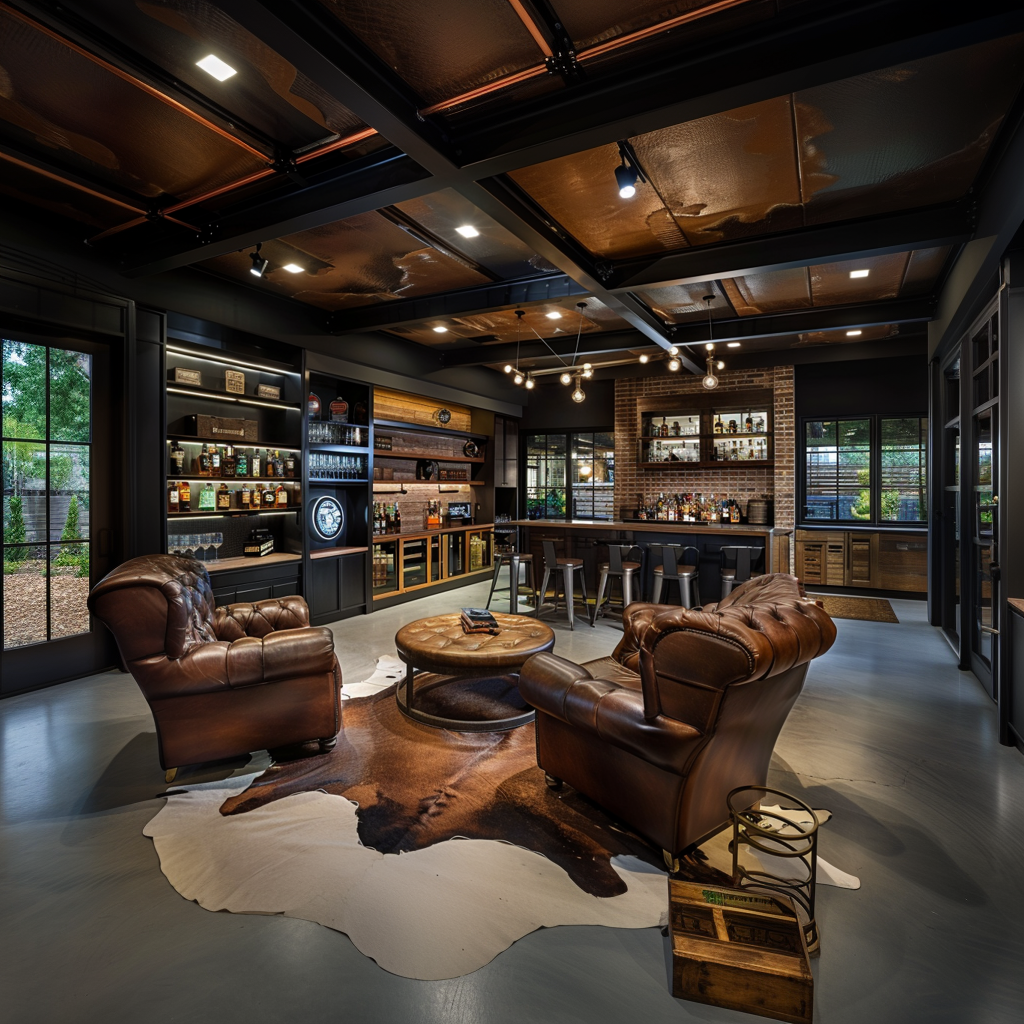

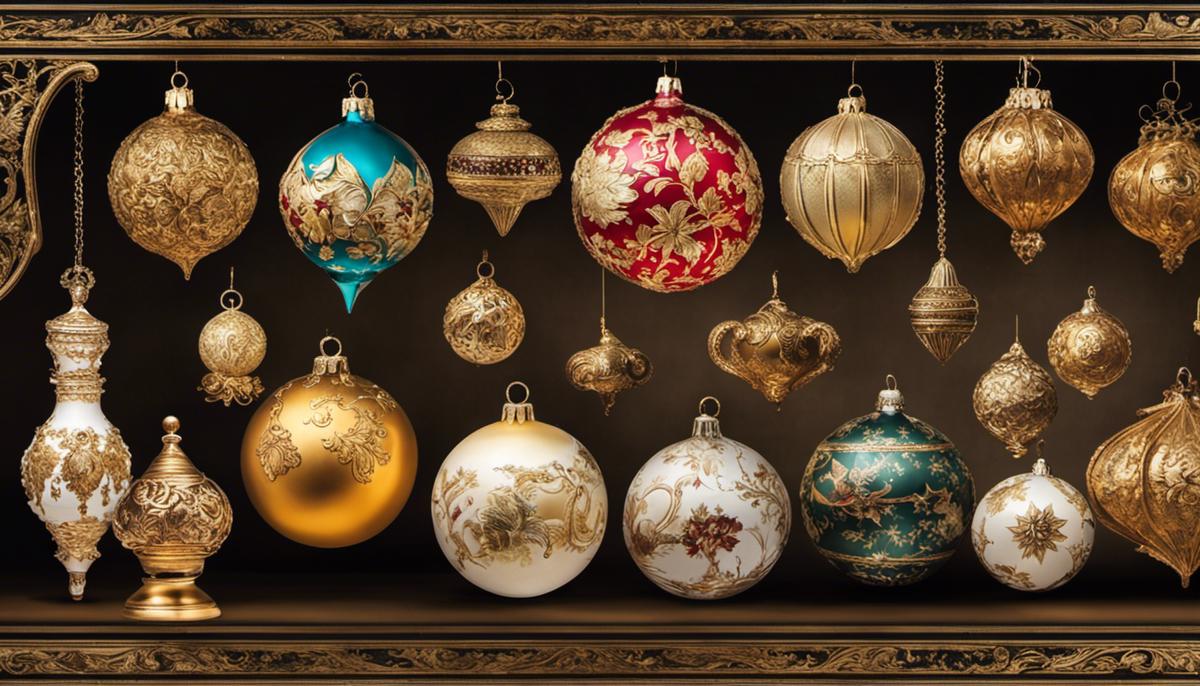
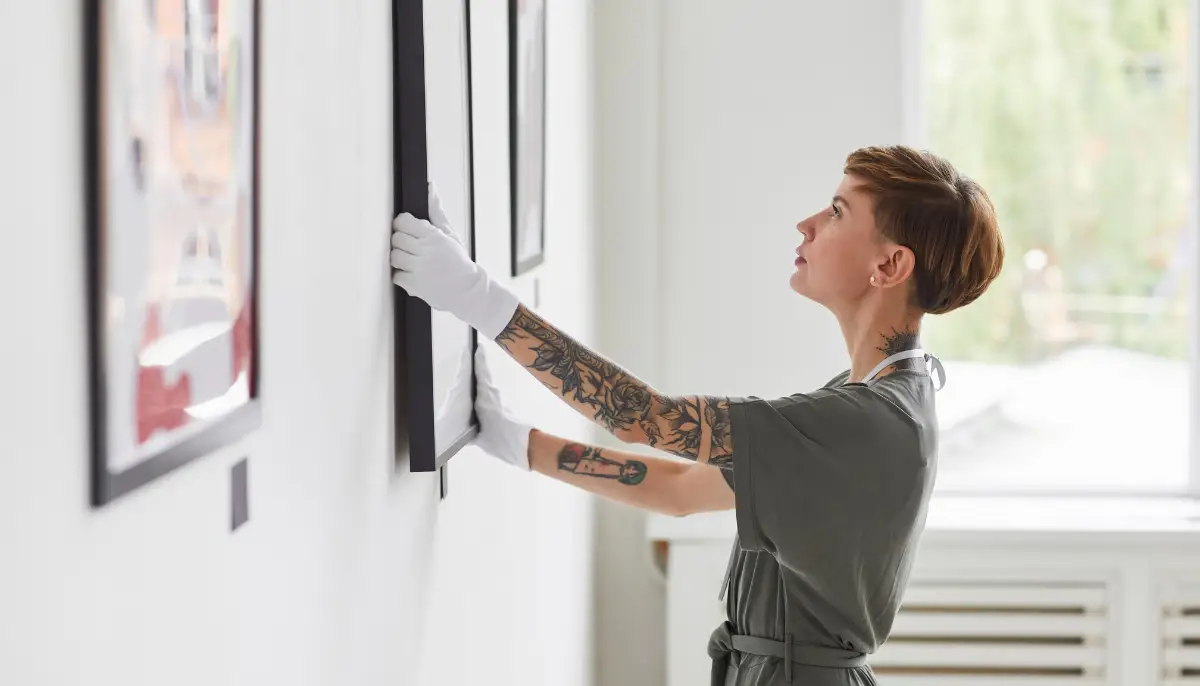

Leave a Reply